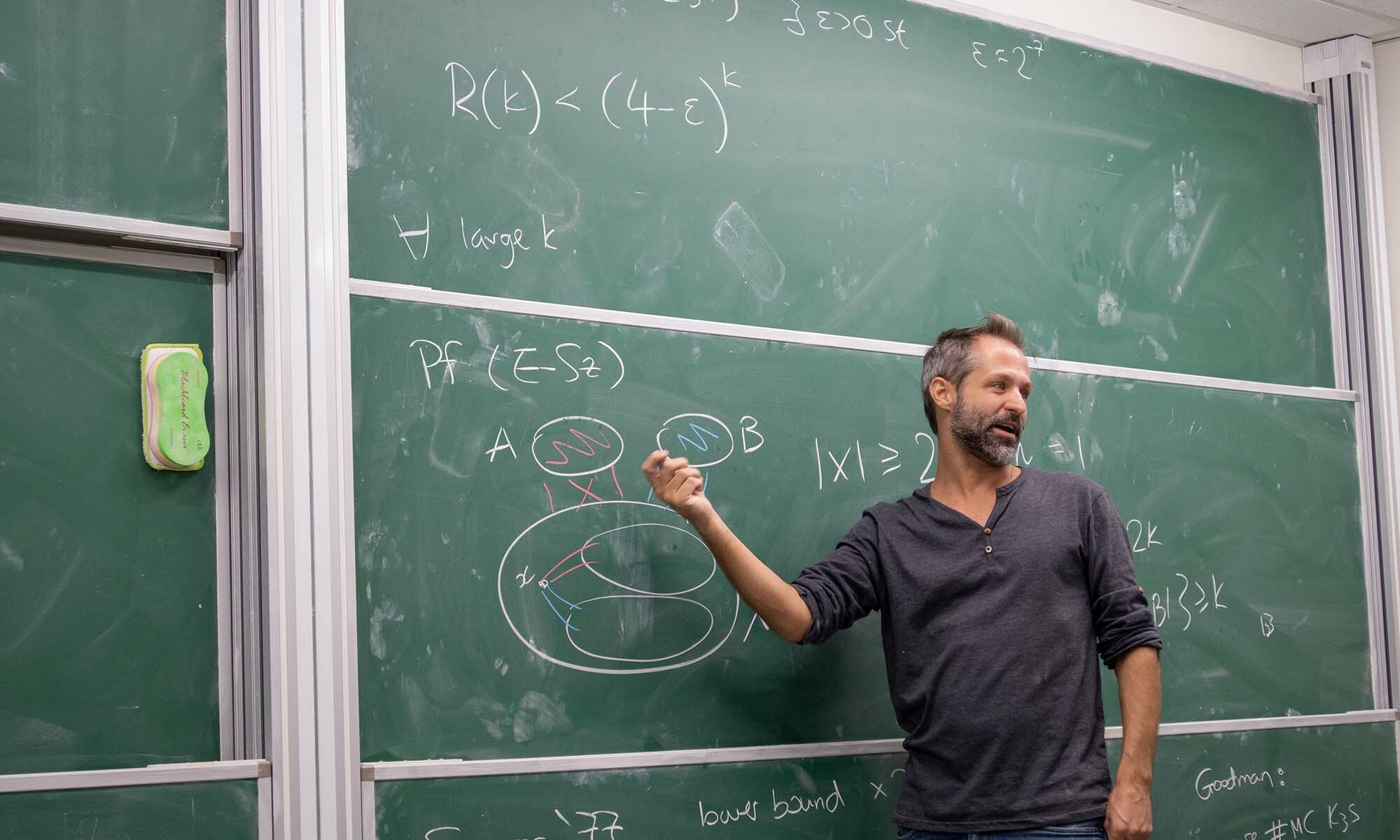During the Discrete Math Seminar held on May 2, 2023, Rob Morris of IMPA presented on the recent breakthrough regarding the diagonal Ramsey number, specifically demonstrating that $R(k,k)<(4-\varepsilon)^k$. The title of his talk was “An exponential improvement for diagonal Ramsey.”
Rob Morris gave a colloquium talk at KAIST on Ramsey Theory
On April 27, 2023, Rob Morris from IMPA gave a colloquium talk on Ramsey Theory at the Colloquium of KAIST Mathematical Sciences. The title of his talk was “Ramsey theory: searching for order in chaos.” Rob Morris is currently visiting IBS and will give a seminar talk at IBS on May 2 with more details on his latest theorem on diagonal Ramsey numbers.
Rob Morris, Ramsey theory: searching for order in chaos
In many different areas of mathematics (such as number theory, discrete geometry, and combinatorics), one is often presented with a large “unstructured” object, and asked to find a smaller “structured” object inside it. One of the earliest and most influential examples of this phenomenon was the theorem of Ramsey, proved in 1930, which states that if n = n(k) is large enough, then in any red-blue colouring of the edges of the complete graph on n vertices, there exists a monochromatic clique on k vertices. In this talk I will discuss some of the questions, ideas, and new techniques that were inspired by this theorem, and present some recent progress on one of the central problems in the area: bounding the so-called “diagonal” Ramsey numbers. Based on joint work with Marcelo Campos, Simon Griffiths and Julian Sahasrabudhe.
Rob Morris, An exponential improvement for diagonal Ramsey
The Ramsey number $R(k)$ is the minimum n such that every red-blue colouring of the edges of the complete graph on n vertices contains a monochromatic copy of $K_k$. It has been known since the work of Erdős and Szekeres in 1935, and Erdős in 1947, that $2^{k/2} < R(k) < 4^k$, but in the decades since the only improvements have been by lower order terms. In this talk I will sketch the proof of a very recent result, which improves the upper bound of Erdős and Szekeres by a (small) exponential factor.
Based on joint work with Marcelo Campos, Simon Griffiths and Julian Sahasrabudhe.



